
SMU survey: Steel mill lead times stabilize following months of declines
Steel mill lead times were flat to slightly up, according to our market survey this week.

Steel mill lead times were flat to slightly up, according to our market survey this week.
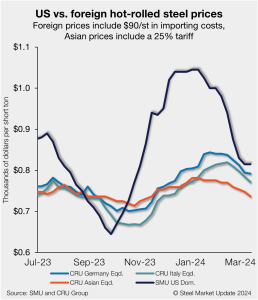
US hot-rolled coil (HRC) remains more expensive than offshore hot band, even as domestic prices remain under pressure. The premium domestic product had over imports for roughly five months now remains near parity as tags abroad and stateside inch down.

US senators have introduced the "Stop Mexico’s Steel Surge Act," which seeks to reimpose 25% Section 232 tariffs on Mexican steel imports.
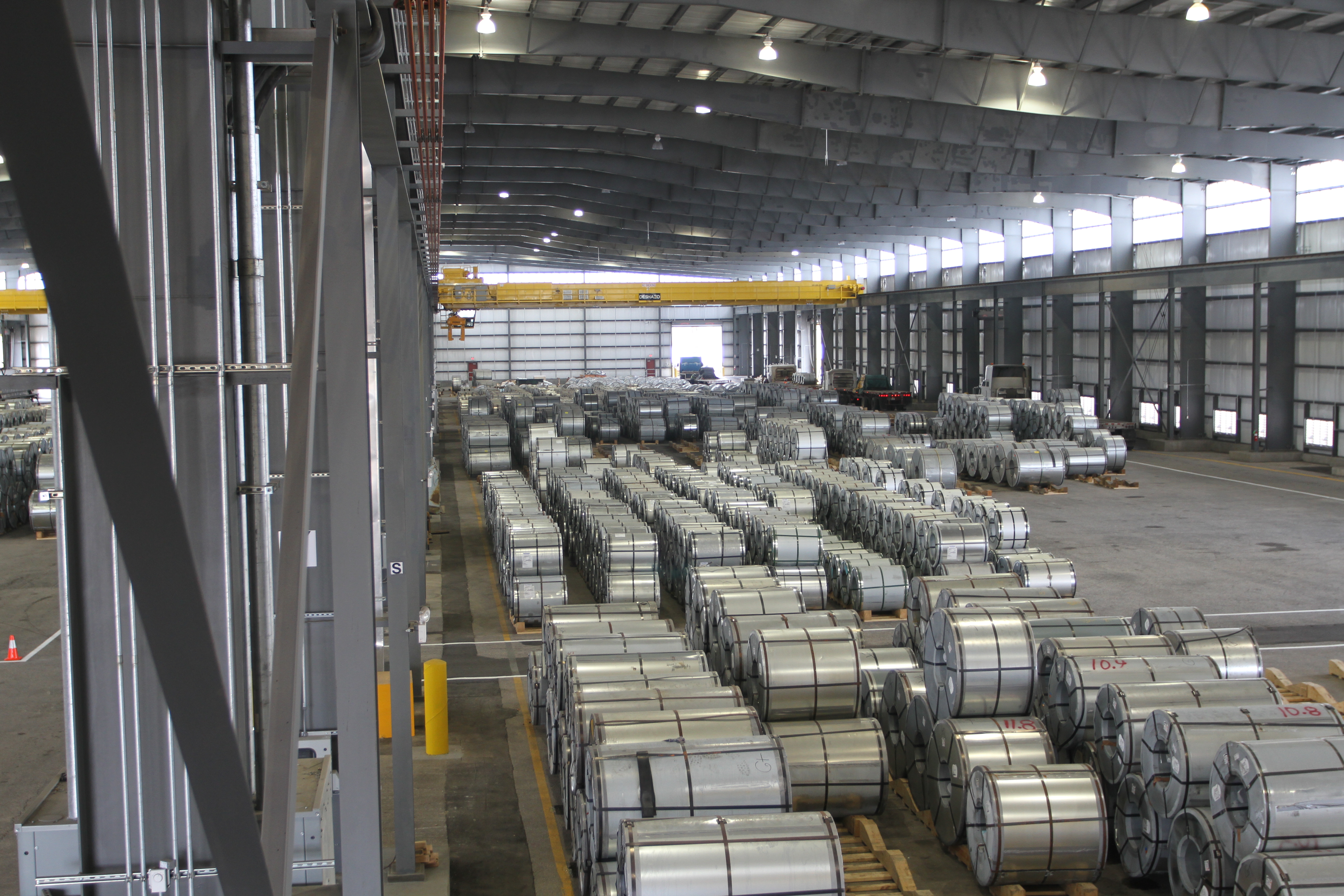
The apparent supply of steel in the US increased in January, rising to a five-month high, according to data compiled from the US Department of Commerce and the American Iron and Steel Institute (AISI).

As I see it, the market looked to be a perfect storm for consumers this month while two large steel mills tried to put a floor on hot-rolled coil (HRC). One source speculated that “flat rolled mills coordinated their downtime and will take out 250,000 tons of capacity in April,” which made them attempt to put a bottom on flat-rolled product.

In 2023, Mexico emerged as the largest trading partner with the United States—larger than Canada, and even China. The growth in trade with Mexico has been truly historic—Mexico has never captured the title of the largest exporter to the US. At $475 billion for the year, the value of US imports from Mexico exceeded that […]

The LME three-month price continued to strengthen through Friday, March 8, defending its position close to its five-week high and rising further to $2,262 per metric ton (mt), up 0.3%, on the day. Gains were also noted over the last week in other industrial metals, including copper, zinc, and lead. The price gains appeared to be due to weakness in the US dollar, which fell sharply against a basket of currencies after Fed Chairman Jerome Powell said on Wednesday that rate cuts were still expected this year.
The latest steel import license data from the US Commerce Department shows 2.39 million short tons (st) of steel entered the country in February 2024, down 6% from the month prior.

A weak start for sheet demand this year has continued to weigh on global prices. European demand outside of the renewable energy sector was weak enough that market participants said mills are likely to cut output further after several furnace restarts earlier in the year. In China, demand has also failed to pick up after recent holidays, and even government announcements of more stimulus measures during the country’s “Two Sessions” meetings failed to boost market confidence.
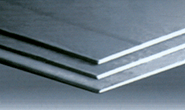
The US plate market has been largely quiet over the past week since Nucor’s $90-per-ton price cut at the close of February.

A Detroit-area mill entered the scrap market on Thursday offering down $70 per gross ton (gt) on #1 busheling. And Nucor announced a minimum base price of $825 per short ton (st) for hot-rolled (HR) coil. What's the best way to interpret would could be read as contradictory trends?

Antidumping and countervailing duty (AD/CVD) rates on imports of cut-to-length plate from two major South Korean producers may soon be adjusted.
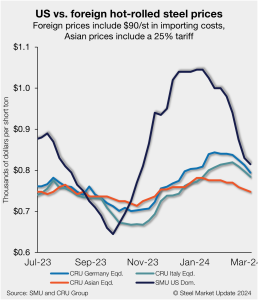
US hot-rolled coil (HRC) is now just about 5% more expensive than offshore hot band. The premium domestic product had over imports for roughly five months is all but gone, and nearing parity.

What are folks in the steel industry talking about at present? Respondents to SMU’s mini-survey this week shared some of their thoughts with us about what's going on in the market. Rather than summarizing their responses, here’s some of what they had to say in their own words.

A clear consensus has emerged among respondents to SMU’s latest steel market survey that hot-rolled (HR) coil prices will bottom this month or in April. Seventy-five percent of respondents to our latest survey think that prices will find a floor before May as the chart below shows:

The failure of the trade remedy actions against imported steel tin mill products (TMPs) continues to resonate. Cleveland-Cliffs and the United Steel Workers Union (USW) lost the case at the International Trade Commission (ITC) last month. A few days ago, the ITC released its final report explaining the decision against imposing antidumping and countervailing duties […]
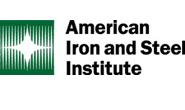
The American Iron and Steel Institute (AISI) is urging Congress to strengthen US trade laws. Specifically, Kevin Dempsey, president and CEO of AISI, asked Congress to incorporate the provisions of the Leveling the Playing Field 2.0 Act in any trade legislation that moves forward this year.
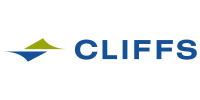
Cleveland-Cliffs CEO Lourenco Goncalves said he blames U.S. Steel’s lack of participation in the tin mill products trade case for an unfavorable US International Trade Commission (ITC) decision.

The premium US hot-rolled coil (HRC) held over offshore product for roughly five months has nearly vanished. Domestic hot band prices continue to run downhill at a high rate, erasing a $300/st gap they had over imported HRC just two months ago.

Mexico has said it will place retaliatory steel tariffs on the United States if the US acts to reimpose Section 232 on its neighbor, according to an article in Reuters.

What are some “Black Swans” to watch out for? With the war in Ukraine entering its third year, your mind might understandably move to conflicts overseas. Here is one closer to home to consider: US trade relations with Mexico taking a turn for the worse. I mention that because the Office of the United States Trade Representative (USTR) dropped a (virtual) bombshell earlier this month.

US hot-rolled (HR) coil prices have fallen further this week, working their way to $800 per short ton (st) on average – a mark not seen since late October.
January’s import level was even higher than an earlier license count had suggested, making it the highest month for imports since June 2023.

Foreign cold-rolled coil (CR) remains much less expensive than domestic product even as prices in the US have declined at a rapid pace over the past month, according to SMU’s latest check of the market.

Falling US sheet prices have reduced the attractiveness of hot-rolled (HR) coil imports as domestic mills price competitively to secure limited business. However, tightness in the CR coil market has extended delivery to June or July in some cases, and buyers may consider to import given competitive prices and arrival times.

Domestic prices have been sliding since the beginning of the year, and I don’t see any obvious reasons why the slide might stop this week. But let’s put the timing of a bottom aside for a minute. The question among some of you seems to be whether we’ll see another price spike, or at least a “dead-cat bounce,” before the typical summer doldrums kick in.

This week, the World Trade Organization (WTO) ministerial conference convenes in Abu Dhabi, UAE. There are many issues on the WTO’s plate. The question is whether any resolution of these matters is likely or even possible. One of the most important issues is the future of the dispute settlement system, which has been rendered impotent […]

US Trade Representative Katherine Tai has voiced the United States’ unease at a marked increase in steel and aluminum imports from Mexico, and what she termed a lack of transparency about Mexican imports of the metals from third countries.

Nippon Steel Corp.’s (NSC) operations in China are a potential security concern of the Biden administration, according to a Bloomberg report citing anonymous sources close to the matter.

At SMU, our goal is not to tell you what to think but to keep the conversation going. We asked you in our survey this week what you were seeing when it comes to steel prices, demand, imports, and wildcards. In your own words, with minimal editing, here’s what some of you in the SMU community shared with us this week.